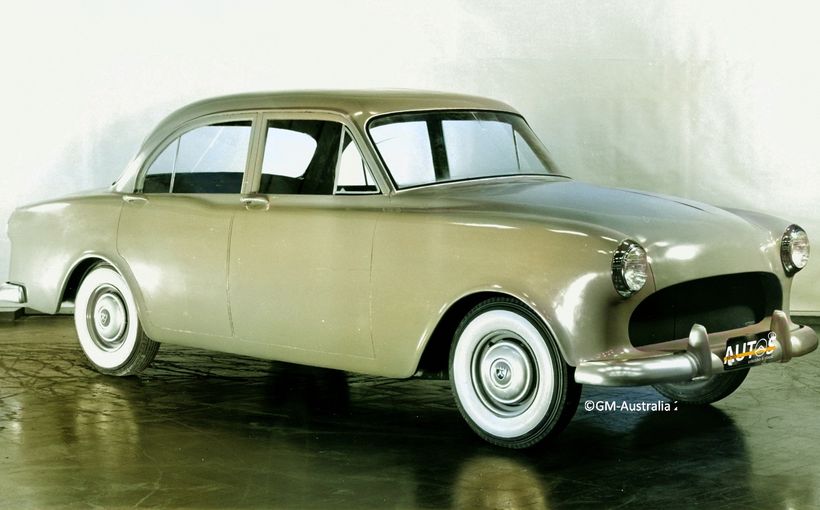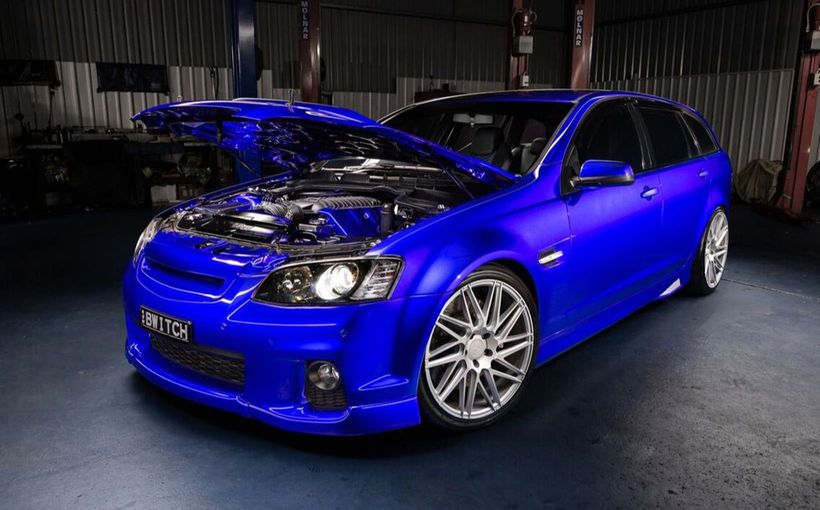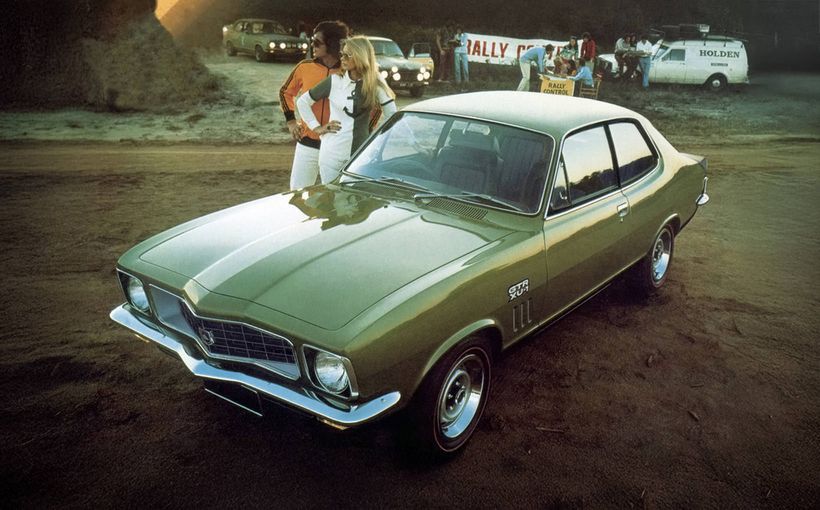Holden HT and HG Monaro: Australia’s own muscle car master

Because it looms so prominently in Australian automotive legend, it's now difficult to grasp that the HK Monaro was on the market for merely 10 months before it was succeeded by the HT. In many respects this 1969 model was superior, but it was compromised somewhat by the input of George Roberts, newly arrived from Detroit as Holden's chief engineer.
All HT Holdens felt more refined and, in accordance with Roberts' predilection for an American-style 'boulevards ride', were plusher in their negotiations with the road: the sharp handling and steering feel of the HK were compromised; understeer was more pronounced.

There was no question that the HT Monaro, especially in premium GTS 350 guise offered a broader appeal. Its GTS 327 predecessor had essentially been conceived as a production racing car to topple the Falcon GTs at Bathurst, a duty it fulfilled in epic style. The story of Bruce McPhee's victory (with co-driver Barry Mulholland contributing a single lunchtime lap) is arguably more memorable than that of 1969 victor Colin Bond in one of two Holden Dealer Team GTS 350s (the other driven by DesWest with Peter Geoffrey Brock as his number two).
The following year would see the big Monaro retired from front line racing duties in favour of the more agile Torana XU-1. But even before the 1969 race, it was evident that Holden's thinking about the flagship edition of the coupe had shifted. The GTS 327 was only available with the four-speed Muncie gearbox, but the 350 could be ordered as an automatic, complete with softer suspension settings. On the negative side it came in a lower tune of 275 brake horsepower rather than 300.

Overall the HT Monaro was a more mature piece of work. The HK GTS had a tachometer mounted infamously on the centre console, there having been no room in the dashboard among the rectangular gauges. But the HT got more elegant and readable round instruments with matching speedo and tacho. Power steering and air-conditioning were optional.
Where the GTS 327 was essentially a raw-boned racer, the 350 was a serious grand touring car that could double excellently as a Bathurst victor.

In his road test of the Powerglide GTS 350, published in the July 1970 edition of Wheels magazine, James-Laing Peach, begins by summarising the market impact of the original hotshot Monaro:
When the General dropped its Monaro GTS 327 bombshell back in September 1968, it was as In as any car possibly could have been. GTSs were as eagerly sought after by with-it executives as potential Bathurst 500 privateers wanting to assess their worth. But the novelty wore off as the thrill of straight-line acceleration and the stares of awe from bystanders produced diminishing appeal and a billy-cart ride, heavy steering and a clunky four-speed change became more noticeable.
In August 1969 the General intervened in the fight of comfort versus race track handling. The 350 GTS Holden which had been pioneered in the London-to-Sydney Marathon landed on the market in both manual and automatic forms. The manual form we tested back in WHEELS November 1969, prior to the car's convincing win in the Bathurst 500 – the second year in a row. The same car also won the 12-Hour race at Surfers Paradise which spells out clearly the Monaro's racetrack prowess.
Although this track ability seemed beyond question we heavily backed the Falcon XT GT against the Monaro HK GTS as a road car. For the 1969 models the preference largely changed hands as the GTS 350 was all of the refined touring car the Falcon had been the previous year. Ford's dynamic power in the Falcon GT 351 made it to the point of being ungainly and certainly in wet conditions, quite treacherous.
Amazingly, the two-speed automatic car recorded acceleration times ‘only fractionally slower’ than the four-speed manual. It knocked off the standing quarter in sixteen seconds flat.
The entire HT Monaro range benefited from a more extensive options list. Very popular was the checked houndstooth trim. There was a wide choice of liveries, with what would today be known as 'hero' colours including Sebring Orange and Verdoro Green (olive), superseding the HK's Warwick Yellow, Metallic Bright Blue and Picardy Red (with Silver Mink continuing).
The XR Falcon GT had been a limited run edition, available only in GT Gold (bronze) but the XT was a regular model with a choice of colours. The transition from HK GTS 327 to HT GTS 350 was somewhat similar.

As with the HK, the entry level Monaro was a faintly embarrassing two-door taxi style of offering, complete with three-speed manual transmission and a column shift; at least first gear was finally synchronised!
History doesn't record how many basic HK Monaros carried a rear windscreen sticker saying ‘Drive a Bathurst’ winner but it would have been plenty. The HT was little better and, frankly, even the six-cylinder GTS variants left a fair bit to be desired. But the GTS had the low-rider stance, blacked-out grille and stripery of the 327; so, visually, peas in a pod.
The standard Monaro still made do with the lacklustre 114 bhp 161 sixpack, while the GTS at least got the 186S running through the Opel four-speed manual gearbox. Amazingly, from 1968 through to the coming of the HQ in July 1971, maximum horsepower of the 186S engine was pegged at 145.
In terms of mass market appeal, the biggest news that came with the transition from HK to HT was the introduction of the two new Australian V8s, the 253 cubic inch and 308 cubic inch. The former gave 185 brake horsepower and the latter a formidable 240. These engines had originally been scheduled for the HK, but didn’t actually become available until several months into the HT’s production run.
HT Monaro buyers now had seven different engines (including the de-tuned version of the 350) from which to choose – the 161 or 186 sixes in the standard Monaro, plus the 186S, 253, 308 and the 350. The old Chevy 307 was simply superseded by the lustier Aussie 308.
In the GTS the 253 was a very inexpensive option and, frankly, it was difficult to see why anyone would have opted for the 186S. A manual 253 could run the quarter mile in just 17.3 seconds. And its overall fuel consumption would have been all but identical. The 253 was a thoroughly up to date V8 which made its debut in the cleverly named limited edition White Hot Kingswood sedan. As the name implied, this was a white-only offering with three-on-the-tree, front discs, Monaro-style wheeltrims and a few other goodies.
Not only did the HT Monaro offer a US-style breadth of engine choices, but under marketing boss, John Bagshaw, Holden’s plan was to convince more customers to go the American route of V8 sedans and wagons (and, of course, coupes, utes and vans!).
The 308, which ultimately became the sole V8 choice in a Commodore, delivered a big increase in performance over the ‘little’ 253. With one of these beneath the bonnet, a GTS manual could blast down the strip in 16.5 seconds and reach a top speed of almost 120 miles per hour. To go much quicker, you needed a Jaguar E-Type, a Super Roo, or a GTS 350.
The 350 developed both its maximum torque and maximum power at the same engine speed (3200 and 4800 respectively) as the 327, but so much more smoothly.
There was a much greater contrast now between the entry level GTS and the Bathurst-bound variant. The inadequacies of the sixpack were more glaringly obvious heading into the new decade.

I had briefly owned an HK GTS 186S and eulogised about it in a feature published in the February 1982 edition of Motor magazine:
I remember the road, the look of the paddocks, the temperature of the late-spring afternoon when I first looked beyond the speedo’s hysterical hundred (161 km/h), beyond the bonnet’s immaculate metallic blue and knew my Monaro for what it was, and for what it wasn’t.
Mine was a basic HK GTS, with the 186S engine(3.0 litres) and that almost impossible Opel four-speed box. In its prime at five-plus years and 55,000 miles (88,500 km. Ever since I had set my adolescent eyes on those first Warwick Yellow 327s, I had wanted one for the looks alone. In 1974 I still thought them beautiful. And I still do now.
The main problem of early Monaros was a low IQ. It knew what it could do well, but hated even trying anything different. Wet roads, bumps – particularly mid-corner bumps – camber changes, speeds over seventy (112 km/h) and stop-start traffic gave the Monaro an identity crisis: am I a rough-riding two-door taxi, it would ask, or a grand touring coupe? Speeds over seventy? Next time you drive down any highway, try listening when an HK/HT/HG approaches; they all suffer from terrible wind-roar, but Monaros are worse than sedans.
Nevertheless, with its drumming exhaust and that blissful pillarlessness, my GTS was the nearest thing I had known to an Australian sports car. Crossing the Queensland border with all systems go and the car so loaded-down it almost thumped the bitumen, it felt as though it was worth thousands, not the eighteen-fifty cash I had paid.
Even in the city it had limitations. The allegedly fragile Opel box plus primitive drivetrain made for snatch, unless you treated this Holden as delicately as if it was a Fiat. Rear vision was poor. There was inadequate room in the rear, though the boot was big.
I loved the car nearly all the five months and 12,000 miles I owned it. But on any rational analysis it was no match for the cool cream Renault 16TS it had irrationally replaced in my hands. The Renault – like the Fiat 125 I would own later – could turn a low-eighteens quarter against the Monaro’s nineteen flat (risking the Opel box), and would cruise comfortably at about 85. For the Monaro, 100 might just as well have been the sound barrier. That Renault had gas-filled rear shocks, standard Michelin XASs, Jaeger instrumentation, and untiring seats. A cool, cool customer. When my wife learnt of my swapping TS for HK, she said I’d lost my mind.
Back in 1982 no-one was seriously predicting that even six-cylinder GTS Monaros would eventually be collectible (even though many pundits saw the unloved Leyland P76 destined for enduring fame and desirability!). I remember seeing a GTS 327 for sale at $1800 at that time.

Re-reading what I wrote so passionately in the summer of 1981-82, I can understand more clearly the brilliance with which Holden's marketing team under the late John Bagshaw packaged the allure of the 327 and 350 road rockets into the all-but-identical looking 186S.
In his enthralling book, Golden Miles: Sex, Speed and the Australian Muscle Car (Lothian Books, 2005), Clinton Walker writes:
The Falcon GT/GTHO, which predated the Monaro, was the most muscular of all Australian cars, but it was a sedan, and that's why so much focus falls on the Monaro as the original Australian muscle car. And if another defining aspect of the muscle car was its youthful orientation, the Monaro also had that in a way the GT didn't. The Falcon GT never pretended to be anything but a limited-edition race special. The Monaro was both a race special and a young-generation dream machine.

In that period of my life I thought about buying a purple XA Falcon 250 2v four-speed sedan with bucket seats and (I think) 12-slotters, undoubtedly a superior machine in every measurable way to the GTS I would buy a few months later. But the Monaro got into my bloodstream in a way few other cars have before or even since. Having said all that though, I wouldn't feel the same way now as I did back then in what seems to have been a time of great personal automotive naivety. HK Monaro GTS 186S or Renault 16TS? No contest.
The Mount Panorama Monaros enjoyed only a brief heyday; this probably makes us treasure them all the more these decades later.

By the time the ever so mildly facelifted HG Monaro was released in July 1970, the big Holden coupe's racing duties were over. The formula was essentially unchanged with the biggest change being the arrival of the all-Australian Tri-Matic auto to replace the Powerglide. There was a sense that the HG was a little smoother and more refined, across the range.
It was one of the least changed Holden models in history. The HG only had to do duty in new car showrooms a fortnight less than a year. Launched on 29 July 1970, it would be superseded by the quite radically new HQ range on 15 July 1971.
The biggest visual differences from its HT predecessor were the tidier grille and rear light treatment.
The most significant mechanical news was undoubtedly the keenly awaited Tri-Matic (quickly dubbed ‘Trau-Matic’) transmission. Its extra ratio and part-throttle kickdown made all automatic Monaros other than the GTS 350 feel livelier and much more responsive. But the Tri-Matic was not offered in the GTS 350 because Holden’s engineers were not confident their proud new transmission could handle so much Chevrolet torque.
While many GTS buyers chose manuals, those who wanted two pedal motoring fared much better with the Tri-Matic. Not to put too fine a point on it, the six-cylinder HK and HT GTS had been absolute slugs: try 20.5 seconds for the standing quarter mile! Swapping an HT 186S Powerglide for its HG Tri-matic successor – in terms of responsiveness and performance – would have been almost equivalent to trading your HK 186S four-speed on an HT 253 with Powerglide. It is not just engines that are key determining factors in performance (and economy).
One always had to be careful choosing which Monaro variant to buy. Sadly, because the HG 350 GTS never raced for glory at Mount Panorama it will forever be overshadowed by the HK and HT. But in my opinion this is the ultimate Holden Monaro – of the original period.












